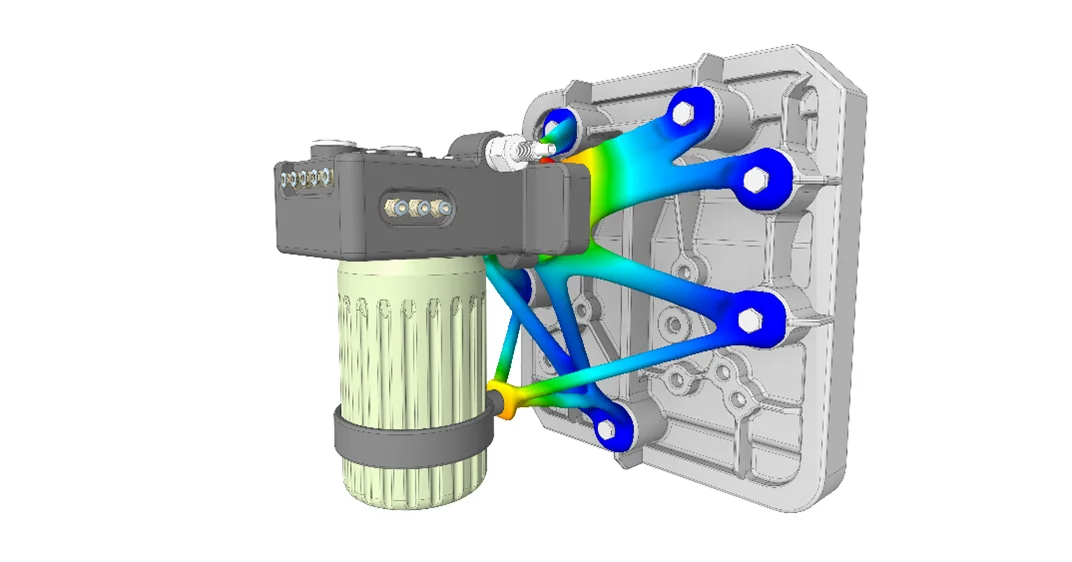Innovation in engineering is driven by the ability to experiment, test, and iterate rapidly. Traditional simulation methods, while powerful, often come with long processing times and complex workflows that slow down the design cycle. Engineers need tools that allow them to explore ideas quickly without sacrificing accuracy.
Ansys Discovery, a next-generation simulation tool that combines real-time physics, high-fidelity analysis, and a user-friendly interface is revolutionizing the way engineers approach design exploration.
The Changing Landscape of Engineering Simulation
Historically, engineering simulations required specialized knowledge, high computational resources, and long wait times. Engineers had to create models, refine meshes, set up boundary conditions, and run simulations that could take hours or even days. This traditional approach, while necessary for final validation, is not ideal for early-stage design exploration, where quick iterations can make or break a project.
Ansys Discovery changes this paradigm by providing a real-time, interactive simulation environment. Engineers can now test multiple design concepts in minutes rather than hours, allowing them to refine their ideas early and avoid costly errors downstream.
Key Features of Ansys Discovery
Ansys Discovery is built around the concept of combining speed and accuracy to enable engineers to make informed decisions faster. Here are just four of the most compelling standout features:
- Real-Time Simulation for Instant Feedback
One of Discovery’s most groundbreaking capabilities is its real-time physics solver, which allows users to see how their designs perform instantly. Whether it’s structural deformation, fluid flow, or thermal distribution, engineers can modify their designs and get immediate visual feedback:
– Structural Analysis: Apply loads and boundary conditions to see deformations and stresses in real-time.
– Fluid Dynamics: Test airflow and fluid behavior without setting up complex computational fluid dynamics (CFD) simulations.
– Thermal Simulation: Analyze heat dissipation and temperature distribution instantly.
This immediate feedback drastically reduces the number of design iterations required, leading to faster development cycles.
- High-Fidelity Analysis for Deeper Insights
While real-time physics provides a quick way to explore ideas, some designs require more detailed simulations for final validation. Ansys Discovery seamlessly transitions from fast approximations to high-fidelity, solver-based simulations when needed.
Engineers can use this feature to:
– Perform detailed stress and strain analysis on critical components.
– Run full CFD simulations for complex fluid behaviors.
– Conduct thermal and electromagnetic studies with increased accuracy.
This ability to switch between rapid exploration and precise analysis within a single tool eliminates the need for multiple software packages and improves workflow efficiency.
- Interactive Geometry Editing for Seamless Design Tweaks
A major bottleneck in traditional simulation workflows is the need to switch between CAD modeling and simulation tools. Discovery integrates direct geometry editing, allowing engineers to modify designs on the fly without going back to a separate CAD package. This streamlines the process by enabling:
– Quick geometry modifications to test different concepts.
– Automatic meshing for instant simulation readiness.
– Parametric studies where variables like thickness, shape, or material properties can be adjusted in real time.
This seamless integration between modeling and simulation ensures a more efficient and iterative design process.
- Multiphysics Capabilities for Holistic Design
Modern engineering challenges rarely involve a single physics domain. Discovery enables multiphysics analysis, meaning engineers can evaluate how different forces interact within their designs. Examples include:
– Fluid-Structure Interaction (FSI): Studying how airflow affects mechanical components.
– Electromagnetics and Heat Transfer: Simulating how electrical currents impact thermal performance.
– Structural-Thermal Coupling: Ensuring mechanical components can withstand thermal expansion stresses.
By integrating these capabilities, Discovery ensures that engineers consider all aspects of performance, leading to more robust and reliable designs.
Applications of Ansys Discovery in Industry
The impact of Discovery extends across multiple industries, where rapid simulation-driven design is crucial for innovation. Some examples are:
Automotive: Accelerating Electric Vehicle Development
Electric vehicles (EVs) require extensive optimization to balance weight, efficiency, and thermal performance. Discovery enables automotive engineers to:
- Simulate battery cooling systems to prevent overheating.
- Optimize aerodynamics for better energy efficiency.
- Evaluate chassis and component durability under various loading conditions.
By reducing design cycles, Discovery helps automotive manufacturers bring EVs to market faster while maintaining high performance and safety standards.
Aerospace: Pushing the Boundaries of Lightweight Design
Aerospace engineers must design lightweight yet structurally sound components. Discovery simplifies this process by enabling:
- Topology optimization to reduce weight while maintaining strength.
- Aerodynamic analysis to refine aircraft shapes for fuel efficiency.
- Thermal performance evaluation for jet engines and heat exchangers.
With Discovery’s rapid feedback loop, aerospace teams can iterate quickly to meet stringent industry regulations.
Consumer Electronics: Enhancing Thermal Management
From smartphones to high-performance laptops, managing heat dissipation is a critical challenge. Discovery’s thermal simulation tools allow engineers to:
- Model heat spreaders and cooling solutions.
- Optimize ventilation and airflow in compact designs.
- Reduce the risk of overheating and material degradation.
With real-time simulations, consumer electronics companies can test multiple designs rapidly, ensuring products meet both performance and durability expectations.
Industrial Machinery: Reducing Downtime Through Better Design
In manufacturing and heavy machinery, component failure can lead to costly downtime. Discovery helps prevent these issues by enabling:
- Fatigue analysis to predict wear and tear over time.
- Fluid flow optimization for better cooling and lubrication systems.
- Structural integrity testing to ensure components withstand operational loads.
By improving machine reliability, Discovery aids industries in minimizing maintenance costs and enhancing operational efficiency.
The Future of Engineering with Ansys Discovery
As industries continue to push the boundaries of innovation, the demand for faster, more intuitive simulation tools will only grow. Discovery represents the future of engineering simulation by enabling:
- AI-driven design optimizations that automate complex trade-offs.
- Cloud-based collaboration, allowing teams to work on simulations remotely.
- Digital twin integration, combining real-world sensor data with virtual testing.
By integrating these advancements, Discovery ensures that engineers remain at the forefront of technology, capable of solving the toughest design challenges with confidence.
Transforming Design with Real-Time Simulation
Ansys Discovery is more than just another simulation tool – it is a paradigm shift in how engineers approach problem-solving. By providing real-time physics, high-fidelity analysis, and an intuitive interface, it empowers designers to explore ideas faster, optimize performance earlier, and reduce costly iterations.
For any engineering team looking to stay competitive in today’s fast-paced innovation landscape, adopting Ansys Discovery is a game-changer. Whether you’re designing the next-generation electric vehicle, optimizing a high-speed jet, or creating a breakthrough consumer device, Discovery enables you to bring your ideas to life with unparalleled speed and accuracy.
With real-time simulation at your fingertips, the future of engineering has never been more exciting.



